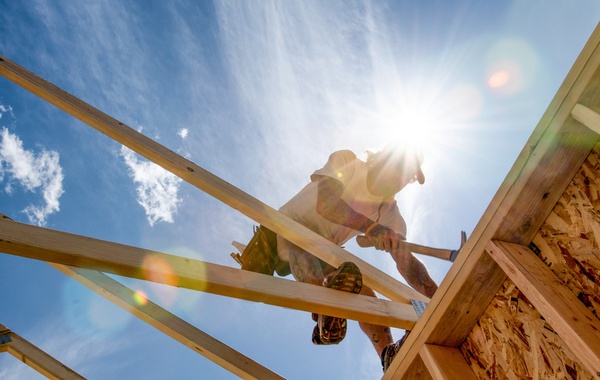Domestic Building Consumer Guide
Your builder must give you a copy of the Domestic Building Consumer Guide before you sign a major domestic building contract. The Domestic Building Consumer Guide is the contract information statement required by section 29A of the Domestic Building Contracts Act 1995.
Before you start your building work
The Victorian Building Authority (VBA) registers building practitioners and monitors their conduct and compliance with the building regulations.
Your builder must also take out Domestic Building Insurance if the cost of the work is more than $16,000. To check if a builder is eligible for Domestic Building Insurance
Appointing your builder
The builder must be a registered building practitioner and use a major domestic building contract if the work costs more than $10,000. Building work includes:
building a house
altering, renovating extending a house
undertaking work such as landscaping, paving or constructing retaining structures, driveways, fencing, carports, garages, workshops, swimming pools or spas when building, repairing, renovating or extending a house
installing lighting, heating, ventilation, air conditioning, water supply, sewerage or drainage to the house or property
demolishing or removing a house
preparing plans and specifications for the work
any work associated with building on residential-zoned land and for which a building permit is required, and
any site work, including work to ensure access to the property
By law, a major domestic contract must contain certain information, including a checklist of important things you should consider before signing the contract. For more information about major domestic building contracts, the checklist and changing a building contract once it has been signed

Green home building guidance
All the green home building advice and guidance you will need for renovations and new home construction can be found in the following categories, starting with step-by-step guidance for high performance home design, all the way to healthy interior finishing.
PLANNING AND DESIGN
This first section of our building guide is intended to act as a platform from which all the next steps for a Green Home build or Renovation are explained . Whether considering building a new home, improving an existing home, choosing a location or Green home to buy, there are priorities to set and decisions to make that may be intimidating if you are new to the construction process. From lifestyle and location choices to design concept
FOUNDATIONS AND BASEMENTS
Renovating or building a new home in the US with a Basement or a Slab on Grade, in the Foundation & Basement guide section you will find the basics on foundation, basement & slab design, insulation, site selection & preparation, excavation, drainage & radon gas prevention & mitigation.
WALLS AND ROOFS
The structure and design of a building envelope will determine how much it costs to heat and cool your home, and how long it will last. This section contains information about wall designs that will protect your home against the elements, and create an enjoyable indoor environment that is healthy, comfortable and durable
MECHANICAL SYSTEMS
Mechanical systems and plumbing are at the heart of a home’s operation. We cover heating and air conditioning, ventilation, electrical systems, efficient water management and renewable energy production. Informed decisions on design and product selection can affect comfort, efficiency, durability, operational cost and above all, health for occupants

How much will it cost to build a house?
Calculating the Cost of Building a House – Table of Contents
Step 1: Understand the basics of the home building process and how to hire the right builder for your project.
Step 2: Know the fees and experts involved in building a home from the ground up.
Step 3: Get to know your lot and how its characteristics can greatly affect building costs.
Step 4: How to calculate primary building costs and be sure that you’re getting comparable bids from potential builders – understanding allowances.
Step 5: Putting it all together and Frequently Asked Questions about custom home building.
Home Building Basics
Building a new home is the largest investment most people will make in their lifetime, so it is important to get it right the first time. The understandable question that we’re asked time and time again is: “What does it cost to build a house?” As you’ve guessed, it’s not an easy question to answer. But we’ll teach you how.
This Guide
This guide will take you step-by-step through the complex process of learning what goes into designing and building your dream home, the impact that the lot will have on the design, understanding primary building cost, and making sure that you and your builder are on the same page so that your home construction is on time and on budget.
Knowledge Relieves Anxiety
As you go through each step along the journey to your new, custom-built home, you will need to hire several experts from several disciplines, who will have to work together to ensure that your new home comes together as a whole.
Preparation
Everyone has a dream of what they want their home to look like – the number of rooms, the view, the amenities. And they know the setting in which they’d like the home to be placed. The setting is the land on which the home will be built – corner lot in a housing development, close to a lake, with a territorial view, on a slope, etc. The complexity of the setting, and the climate in the region where the home is being built affects the cost of the build.

GUIDE TO THE BUILDING PROCESS
Initial conversation
Every project starts with a conversation. Although you can find useful resources on our website, nothing will be as helpful as your local Homes builder to discuss your individual needs, ideas, the requirements of your section, and answer all of the questions you may have when it comes to your new build.
Financing your new home
As home builders, ‘What can you offer for $X?’ is probably the most common question we get from new customers. Well, it depends! If you already have finance approved by a lender and you have a set budget, then we will have a number of homes to suit your price bracket but your options can vary depending on the build option and materials you choose.
Remember to consider any earthworks and access to the building site that need to be developed, size of home and number of bedrooms, bathrooms, and additional living spaces you require. Different building processes will also affect the cost of your home – we have a range of options from home builders running the whole project and building process to kitset homes where we deliver the materials and you build the home yourself or hire a contractor to build it for you.
Choose Your Dream House Plan
Now that you have your finance sorted we have a large number of designs to choose from – giving you plenty of choice regardless of whether you prefer a single or double storey home, whether you want all bedrooms located at the same end of the house, or if you want to include additional office space. All our designs can be altered, you can flip our house plans to fit your section, add more living space areas, or add other personal preferences.
Choose your build option
Depending on your budget and your goals, there are a number of ways to build your own home. Unlike many home builders, Homes is happy to fit in with your needs. From homes, where we deliver the materials and you take charge of the construction process, to full build service, where we take care of the whole building process while you get ready to move in!

TIME MANAGEMENT TIPS FOR HOME BUILDERS
No one seems to have enough time in their day, and builders, with the many roles they play, are often the most harried. If you feel this way, here are some tips from time management experts to help you make the best use of your time.
Plan up front in as much detail as you can. “When [subcontractors] bid a job, sometimes they’re not realistic on how long it’s going to take them,”
Educate your subcontractors. Let them know about your plan, says. “We’re trying to do this to reduce the cycle time,” he says. “When you exceed the cycle time, it costs you for the subs’ time and superintendent’s time.” So it’s important to have a plan in place before work starts and get everybody on board with it. Let the subs know you’re in control of the schedule, they’re not.”
Streamline communication with a weekly email. Regular communication can clear up confusion and cut down on the number of meetings and on wasted time. To keep the project on track, ask your superintendent to send an email at the end of each week to the homeowner and the owner of the home building company
Delegate. Delegating is an excellent way to save time, but make sure you choose appropriate tasks to delegate. “You need to delegate lower tasks,” says. “Understand the best use of your time.”


























